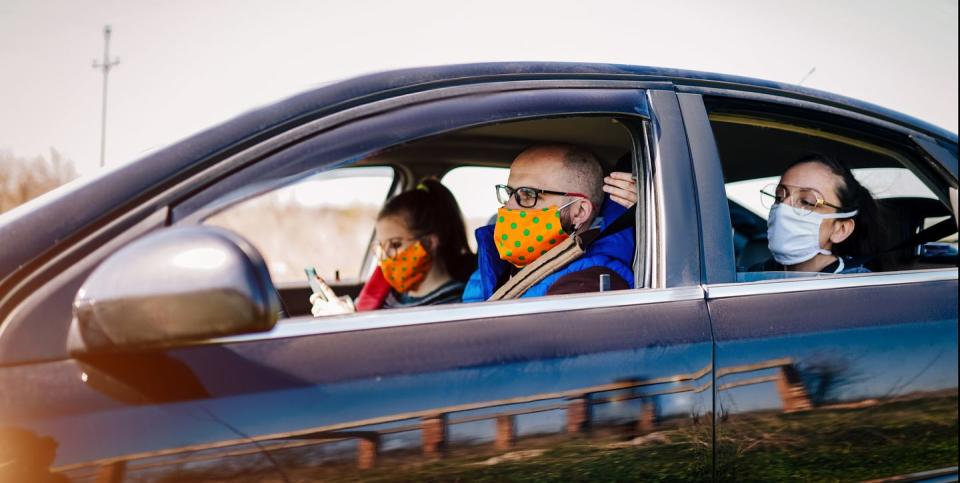Yes, Rolling Down Windows Can Reduce COVID Transmissions in a Car

File this one under "common sense that has now been confirmed," but if you've been curious whether or not opening the windows in a moving car will help reduce the chance of catching COVID-19, rest assured.
A new study in Science Advances proves that opening up all of the windows is the best strategy, but even opening one does help.
If you can't open all four windows, open two on opposite sites to create an "air curtain" that keeps moving air between the passengers, minimizing the potential for the virus to move from driver to passenger.
Cranking up the tunes and blasting them through open windows isn't a common move during the winter, but this year, that might be just the thing to ask your Lyft driver to do. While the music is optional—may we recommend Pearl Jam's "Alive"?—there are good medical reasons to make the ask. Given the chance of catching COVID-19, it's valuable to now have proof that increased airflow means decreased chance of catching the virus while riding in a car.
A new study by researchers at the University of Massachusetts Amherst and Brown University, published this month in Science Advances, looked at "complex airflow patterns that exist inside the passenger cabin of an automobile" and how these patterns affect possible virus transmission between a driver and a passenger. The authors note that a viral load can build up inside the microclimate of a vehicle even on drives as short as 15 minutes, and the virus can remain viable within aerosols for up to three hours.
The study authors looked at just one basic interior configuration: one driver in a left-hand-drive vehicle and one passenger sitting in the back right of a five-seat, four-door passenger car. They used a Toyota Prius moving at 50 mph as the model for the vehicle's exterior geometry. Under these settings, the authors then simulated the in-vehicle airflow under six different window configurations.

 Yahoo Autos
Yahoo Autos 